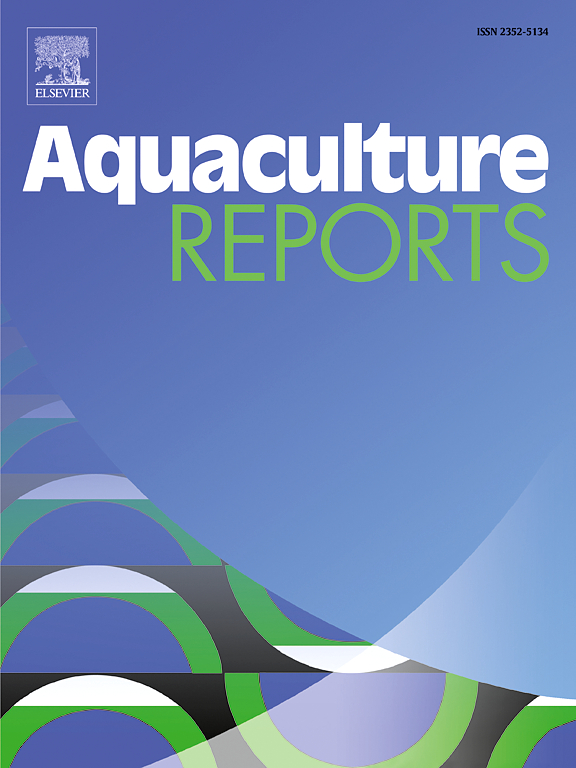Appropriate dietary phosphorus levels promote growth performance, mineral retention, and hepatic lipid metabolism in juvenile American eels (Anguilla rostrata)
IF 3.2
2区 农林科学
Q1 FISHERIES
引用次数: 0
Abstract
Phosphorus (Pi) is an essential mineral for fish and exerts critical roles in growth, metabolism, and skeletal development. The present research was carried out to investigate the effects of different dietary Pi levels on the growth performance, minerals retention, and hepatic lipid metabolism of juvenile American eels. Five experimental diets were prepared using NaH2PO4 and KH2PO4 as Pi sources, with total Pi levels in the diets were determined to be 0.52 %, 0.90 %, 1.31 %, 1.71 %, and 2.11 %, respectively. The feeding trial was conducted over a period of 10 weeks. In comparison to eels fed diets containing 0.52 % Pi, those fed diets with 1.31 % Pi exhibited improved growth performance, feed utilization, and whole-body retention of calcium, Pi, copper, iron, and zinc. Additionally, Eels fed diets containing 1.31 % Pi had lower deformity rate, serum lipid content, and hepatic lipid levels than those receiving diets with 0.52 % Pi. Dietary Pi addition promoted hepatic lipolysis while inhibited hepatic lipogeneses. Conversely, eels fed diets with 2.11 % Pi showed reduced growth performance, feed utilization, and minerals retention, alongside a higher deformity rate, compared to those fed diets containing 1.31 % Pi. Lipidomic analysis indicated that, compared to eels fed diets containing 0.52 % Pi, autophagy, glycerophospholipid metabolism, glycosylphosphatidylinositol metabolism, α-linolenic acid metabolism, and arachidonic acid metabolism were enhanced in the liver of those fed diets with 1.31 % Pi. The quadratic regression analysis of weight gain rate, feed efficiency, and Pi retention against the dietary Pi levels indicated optimal dietary Pi levels for American eels range from 1.31 % to 1.40 %. These findings offer critical insights into dietary Pi supplementation and underscoring the importance of optimal dietary Pi levels for American eels.
求助全文
约1分钟内获得全文
求助全文
来源期刊

Aquaculture Reports
Agricultural and Biological Sciences-Animal Science and Zoology
CiteScore
5.90
自引率
8.10%
发文量
469
审稿时长
77 days
期刊介绍:
Aquaculture Reports will publish original research papers and reviews documenting outstanding science with a regional context and focus, answering the need for high quality information on novel species, systems and regions in emerging areas of aquaculture research and development, such as integrated multi-trophic aquaculture, urban aquaculture, ornamental, unfed aquaculture, offshore aquaculture and others. Papers having industry research as priority and encompassing product development research or current industry practice are encouraged.
 求助内容:
求助内容: 应助结果提醒方式:
应助结果提醒方式:


